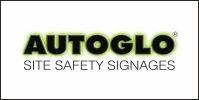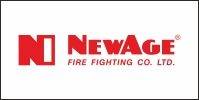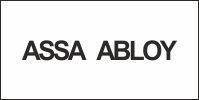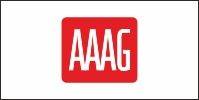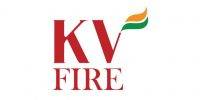 When approaching a vehicle fire, use the full reach of your water supply, and attempt to keep the fire from spreading to parts of the car not initially involved. Also, use full protective equipment, including SCBA. Photo Chris Post
When approaching a vehicle fire, use the full reach of your water supply, and attempt to keep the fire from spreading to parts of the car not initially involved. Also, use full protective equipment, including SCBA. Photo Chris Post
Fighting Vehicle Fires
NFPA data indicate that the fire service responds to a vehicle fire every 2½ minutes.1 In each case, there are many variables that we must be aware of and prepared to deal with:
- Burn time: Some vehicle fires may burn out before we get there while others might be fully involved upon arrival.
- Location: The fire could be anywhere, from the engine to the passenger compartment to the trunk.
- Age: It doesn’t necessarily matter how old the car is; vehicle fires occur in both older and newer models. Their hazards may differ depending on vehicle features and options.
- Contents: Hazards can also increase depending upon what the vehicle is carrying. Note: For the purpose of this article, I won’t discuss fires in trucks carrying cargo.
 First Things First
First Things First
Like every type of incident, the first-arriving officer or company must conduct a size-up of the situation: Is the vehicle well involved, with little left to save, or is just a portion of the vehicle burning, with the opportunity to prevent fire spread? Is the fire exposing other cars or an adjacent building? Is the vehicle carrying anything hazardous, or are there unusually hazardous fuels, such as LPG, natural gas or hydrogen? Are there features, such as solar-powered equipment, combustible metal parts or extra hybrid batteries, on the vehicle?
Is there someone in or around the car who needs to be protected from fire exposure? And don’t forget to check the trunk (stranger things have happened). No matter where they’re located, if someone is trapped or being exposed to the fire, you’ve got to hustle to protect them. Overall, the size-up must occur quickly so that decisions can be made and tactics can be determined and employed.
Hazards & Near-Misses
At the same time, we must be concerned about the hazards presented by vehicle fires, especially since the hazards get more and more exotic with each new model year.
Hazards involving struts (on bumpers, hoods, trunks and elsewhere) have been around for many years. In 1995, my department responded to a fire in a barn that was used to store several classic cars, and by the time we arrived, the 30 x 70 building was well involved. While the engine company was positioned at an adjoining pool to draft, the gas strut bumper on a 1987 Porsche 944, which was stored in the barn, exploded without warning. The strut rocketed through the weakened wall of the barn, traveled across the pool and struck a ground ladder on the side of the engine that was staged about 75 feet away. The rungs on the ladder were dented from the force of the impact. At least one firefighter had been standing in the immediate area of the impact site, but fortunately, he moved just before the strut exploded.
This was a near-miss incident that could have had much worse consequences. The bumper and ladder parts remain on display in our station as a reminder to our firefighters.
Recently, a neighboring department responded to a fire that involved a large front-end loader. As the crew was donning their SCBA and pulling a preconnected handline, an explosion occurred in or around one of the vehicle tires, sending the tire, rim and rear axle 30 feet into the air and burning two crewmembers.
These incidents occur more often than you may think. Numerous near-miss reports listed on the National Firefighter Near-Miss Reporting System website (www.firefighternearmiss.com) describe incidents that involve flying parts, fuel fires and semi-protected firefighters being directly exposed to flames during a car fire. Report #10-262 discusses a car fire in which a strut flew 50 feet and struck a pump operator. Wear full gear and SCBA, and keep some distance between you and the fire.
Engine Fires
If the engine compartment is involved in fire, it is very likely that fuel or other combustible fluids (brake, oil, etc.) are contributing to it. Therefore, you may need to apply foam or a foaming/wetting agent to effectively suppress it, and control runoff to prevent environmental damage or a running fuel fire.
If the vehicle runs on an alternative fuel, such as LP gas, natural gas or ethanol, the risk to firefighter safety is potentially greater than it would be with gasoline or diesel fuel. Be sure to familiarize yourself with gas shutoff valve locations, if you can reach them with minimal risk, when dealing with LP or natural gas fuels in a vehicle.
Even if you extinguish a fuel fire with a hoseline, you’ll likely need to cool the vehicle and surrounding area to prevent any leaking fuel from re-igniting.
Fire Attack
Like many other types of fires, it’s usually beneficial to start your attack on the fire from the unburned side to protect the exposed space. Attempt to contain fires in engine compartments to the engine compartment. The same goes for fires in the trunk. There’s almost always a “firewall” between the engine and passenger compartments, which can greatly assist in containing the fire to the engine compartment; however, there’s no such containment feature between the trunk and the passenger compartment. In fact, many cars actually have fold-down rear seats, opening the trunk into the passenger compartment. This can more easily allow fire to spread from the trunk area into the passenger compartment. Remember: Just like a home, vehicle occupants may leave valuables inside the car—often in the trunk—that you may be able to salvage for them. The trunk’s contents might also provide their own hazards.
Most would agree that it’s beneficial to extinguish a vehicle fire as quickly as possible, because it reduces the potential for possible injuries and further damage to the vehicle and exposures. There’s little to be saved on a well-involved vehicle, and there can be a lot of risk involved during a fire in a larger vehicle. Although some may say I’m a bit crazy, there’s a lot to be said in these cases about going into service with a bumper turret (if you’re so equipped) or a deck gun to knock down the fire down from a safe distance. Remember, more and more car parts—including parts in the engine compartment—are made of various plastics. They burn hot, and give off a variety of gases, many of which can be poisonous, so remember to wear your full gear and SCBA.
When using a handline, use the full distance provided by the stream. If you must get in close, it’s generally beneficial to attack from the corners to avoid potential hazards, such as rocketing struts, which may launch from the front, rear or sides.
Consider knocking down the fire and allowing it to cool a bit prior to finishing the job. Take your time, because heat on parts such as airbags and other newer devices may cause them to ignite or deploy, which could result in injuries. Also consider using a piercing nozzle through the hood, or bending a portion of the hood up to cool the engine before you decide to pop open the hood. Some suggest attacking through the headlights, although this may not always give you good access to the engine compartment.
Things to Remember
Here are just a few important items to remember when at the scene of a vehicle fire:
- If you have access to a reference book or computer software that gives you information on vehicle hazards, use it. If you can’t get the vehicle identification number, get the make and model, and if police are close by, have them run the license plate to get the year of the vehicle. That will provide you with information on fuel tank location(s) and capacity, battery location, air bag locations and other general hazard information.
- Put a wheel chock under the wheel to prevent the car from rolling.
- If the car is still running and you can reach the key, turn off the engine.
- Beware of combustible metals on vehicles, such as magnesium, lithium, titanium and others used in engine blocks, steering wheels, rims and other parts. When ignited, these materials give off white smoke and a distinct white flame that can intensify when hit with water. Eventually, with heavy water application or a direct smooth-bore stream, you’ll likely be able to extinguish these materials. But do so from a distance to avoid exposure to the burning metal pieces, which can burn right through turnout gear.
- Tires on some vehicles, particularly unusual, off-road vehicles, may be filled with something besides air. In some cases, polyurethane is used to flat-proof tires and to provide a more stable ride. Liquid ballast may be used in the tires of other off-road vehicles, as well as calcium chloride, glycols, methanol and even beet juice, which may be used in areas where water can freeze. Several of these materials have a variety of hazards, including the potential for fire and explosion.
- Just about anything you can imagine, legal and illegal, may be carried in vehicles. In some parts of the world, car bombs are a routine issue. Although not common here, the thought should at least give you some pause the next time you rush to get next to a burning car.
A Final Word
Vehicle fires happen often, more often than you may be aware of, and their hazards can be deadly. Approach vehicle fires cautiously, and generally use the full reach of your tools to knock down the fire. Once the fire is knocked down, gently move in for the overhaul phase, making sure everything is adequately cooled off before tearing things apart. Look carefully through the rubble for anything suspicious or salvageable. Take time to read the firefighter Near-Miss Reports to see what has happened to other departments. Don’t let the same things happen to you or your firefighters.












